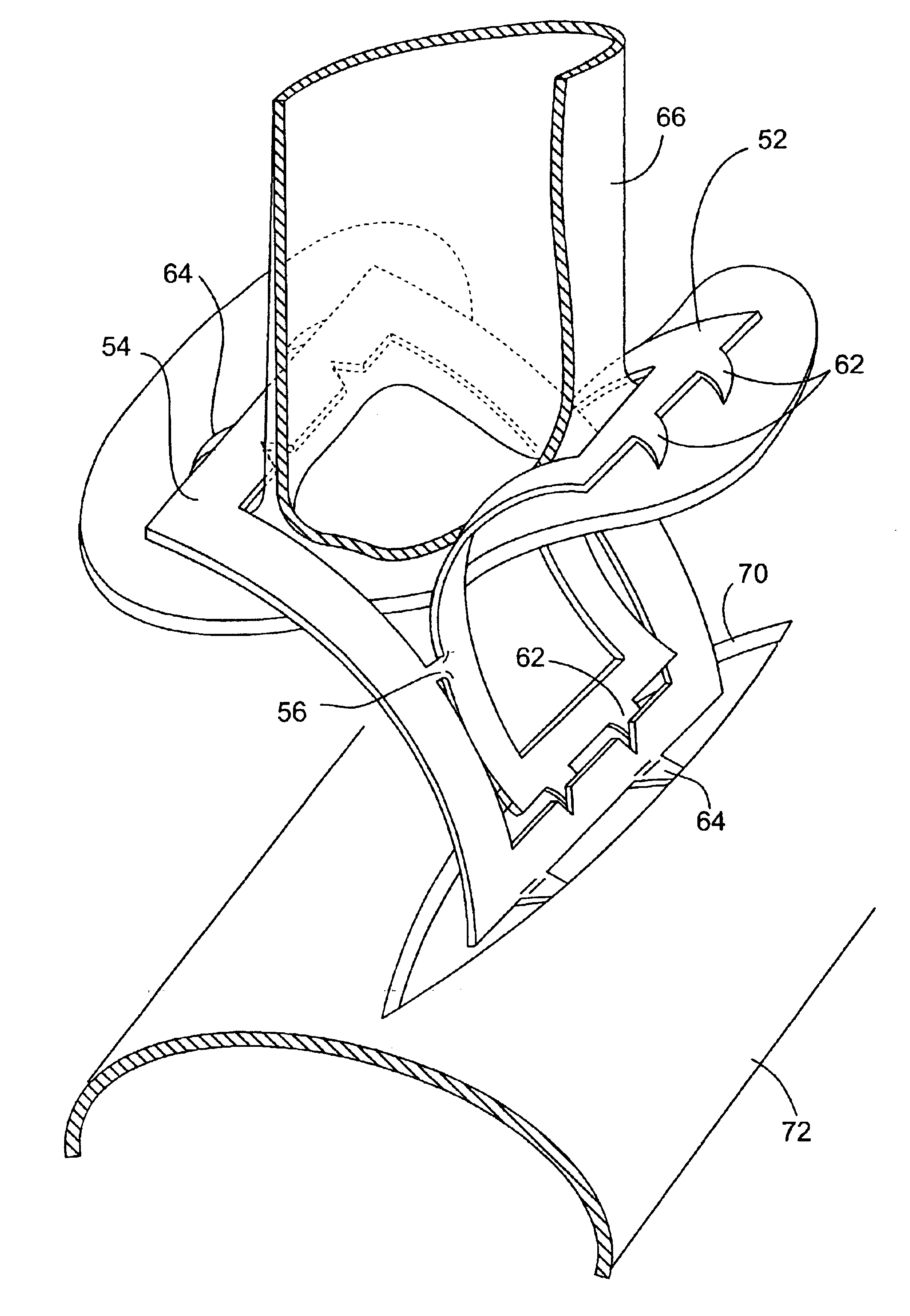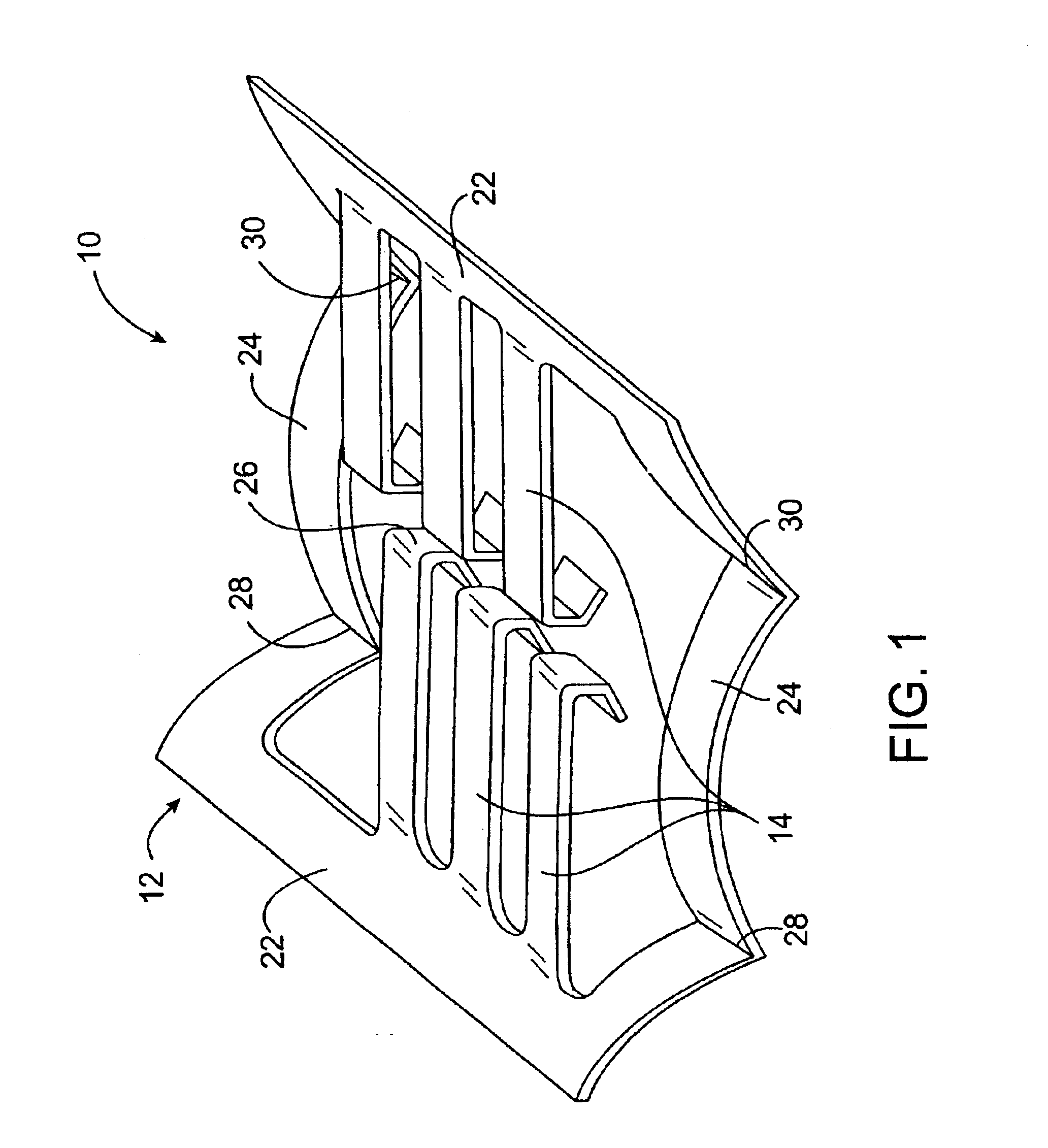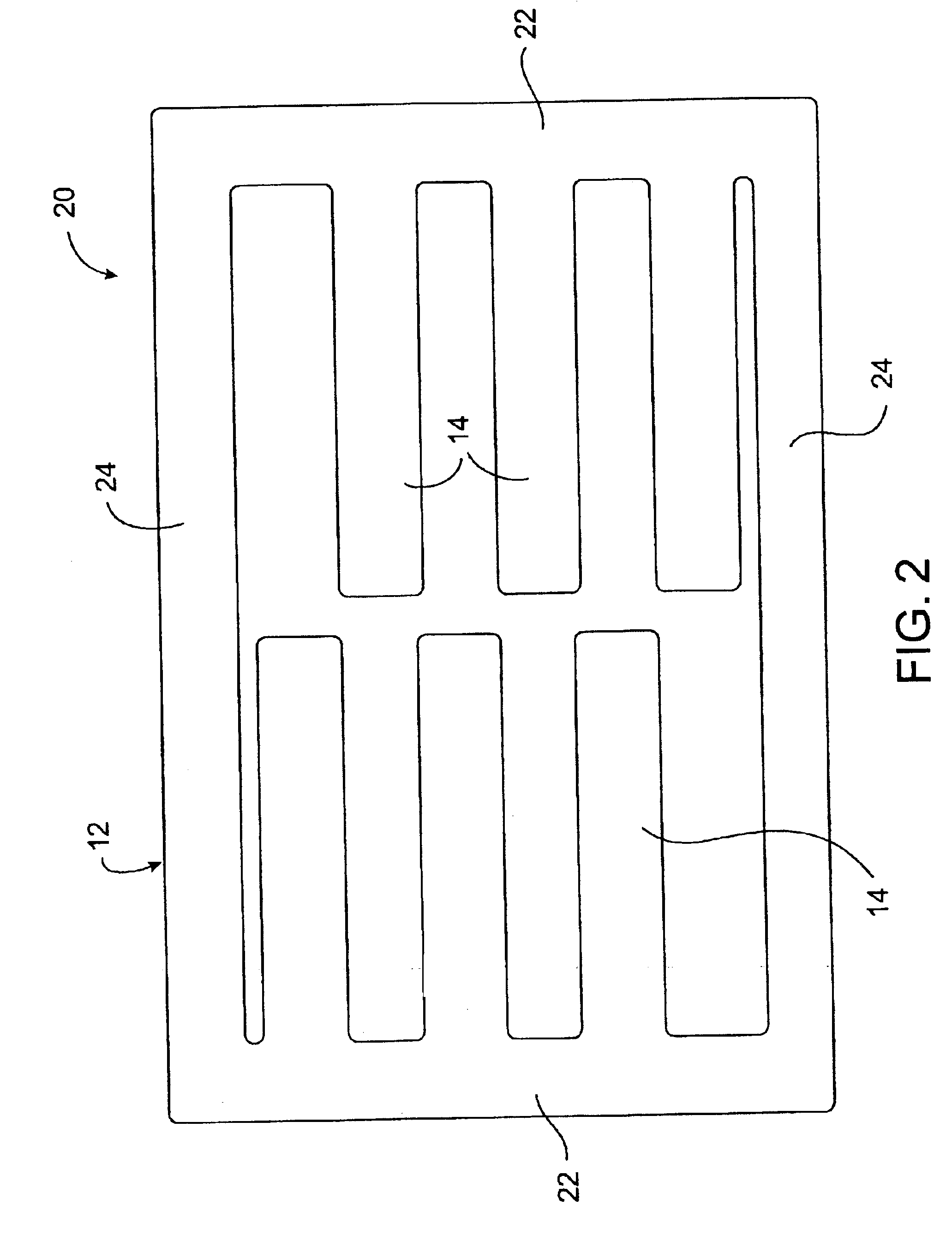Sutureless closure for connecting a bypass graft to a target vessel
- Summary
- Abstract
- Description
- Claims
- Application Information
AI Technical Summary
Problems solved by technology
Method used
Image
Examples
Embodiment Construction
[0031]The present invention relates to an anastomosis device and method for connecting a graft vessel to a target vessel without the use of conventional sutures. The device according to the present invention greatly increases the speed with which anastomosis can be performed over prior art suturing methods. In addition, the anastomosis device provides a smooth transition between the graft vessel and the target vessel. The devices according to the present invention are particularly designed for use in connecting graft vessels to small target vessels having relatively small diameters such as the coronary arteries. Suture of these small vessels is difficult with conventional techniques, particularly in minimally invasive procedures where space may be limited. The devices may also be used for connecting graft vessels to larger target vessels.
[0032]FIG. 1 illustrates an anastomosis device 10 according to a first embodiment of the present invention. The anastomosis device 10 includes a fr...
PUM
 Login to View More
Login to View More Abstract
Description
Claims
Application Information
 Login to View More
Login to View More - R&D
- Intellectual Property
- Life Sciences
- Materials
- Tech Scout
- Unparalleled Data Quality
- Higher Quality Content
- 60% Fewer Hallucinations
Browse by: Latest US Patents, China's latest patents, Technical Efficacy Thesaurus, Application Domain, Technology Topic, Popular Technical Reports.
© 2025 PatSnap. All rights reserved.Legal|Privacy policy|Modern Slavery Act Transparency Statement|Sitemap|About US| Contact US: help@patsnap.com



